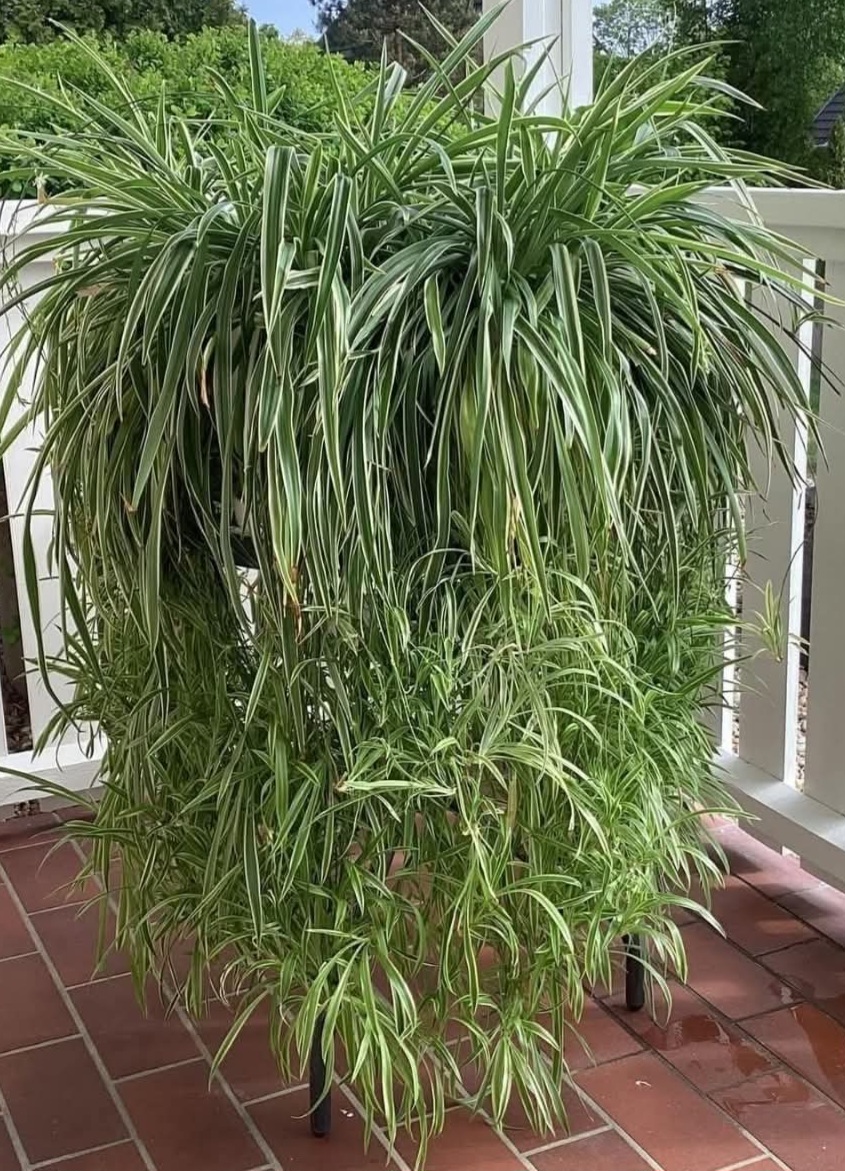Top 10 Secrets to Growing the Biggest, Healthiest Spider Plants
Spider plants (Chlorophytum comosum) are among the most popular and low-maintenance houseplants. With their cascading green-and-white striped leaves and adorable baby plantlets, they are a favorite for beginners and seasoned plant lovers alike.
If you’re looking to grow bigger, healthier spider plants that thrive for years, the key lies in understanding their care requirements. Over time, I’ve experimented with different methods, and I’ve discovered simple yet powerful strategies that make spider plants lush, vibrant, and fast-growing.
Here are the top 10 expert tips for spider plant care that will help your plant reach its full potential.
1. Choose the Best Location for Spider Plants
Spider plants thrive in bright, indirect sunlight. Too much direct sun may scorch the leaves, while low light can stunt growth and reduce leaf variegation.
- Ideal spots: East-facing windows or rooms with filtered sunlight.
- Office settings: They also do well under fluorescent lighting, making them perfect indoor plants for workplaces.
2. Boost Growth with Coffee Grounds
Spider plants respond well to natural fertilizers. Used coffee grounds provide nitrogen, improve soil aeration, and help deter pests like fungus gnats.
- Sprinkle dried coffee grounds lightly over the soil.
- Or make a “coffee tea” by soaking grounds in water and using it as a liquid fertilizer every 2–3 weeks.
3. Use the Right Pot and Soil Mix
Spider plants grow best in well-draining soil with a pot that has proper drainage holes.
- Mix regular potting soil with perlite or sand to improve aeration.
- Choose a pot slightly larger than the root ball—too large a pot can retain excess moisture and cause root rot.
4. Water Spider Plants the Right Way
Overwatering is the most common cause of spider plant problems. These plants store water in their fleshy roots, so they don’t need frequent watering.
- Allow the top inch of soil to dry out before watering.
- In spring and summer: water once a week.
- In fall and winter: reduce to every 2–3 weeks.
5. Maintain Ideal Humidity Levels
Spider plants enjoy moderate humidity. Dry indoor air can lead to brown leaf tips.
- Mist the leaves occasionally.
- Place a water tray with pebbles under the pot to improve air moisture.
6. Fertilize for Stronger Growth
During the growing season, feed your spider plant with a balanced liquid houseplant fertilizer every 2–4 weeks.
- Avoid over-fertilizing, as it can cause leaf tip burn.
- Organic fertilizers, like compost tea, work well too.
7. Prune and Trim Regularly
Pruning helps maintain shape and encourages new growth.
- Cut off brown or dead leaves.
- Trim baby spiderettes if you want the plant to focus on stronger foliage growth.
8. Repot When Necessary
Spider plants can become root-bound quickly. If you notice roots growing out of the drainage holes, it’s time to repot.
- Best done every 1–2 years.
- Always refresh the soil to restore nutrients.
9. Propagate Baby Spider Plants
One of the joys of owning a spider plant is propagation.
- Cut off the small “spiderettes” and place them in water or soil.
- They root quickly, giving you new plants to grow or gift.
10. Keep Pests and Diseases Away
Spider plants are generally hardy but can attract pests like aphids or spider mites.
- Wipe leaves with a damp cloth or use neem oil spray if pests appear.
- Ensure good air circulation to prevent fungal problems.
Final Thoughts
Spider plants are not just beautiful; they’re also air-purifying houseplants that improve indoor air quality. By following these spider plant care tips, you’ll enjoy thriving, lush, and long-lived plants that brighten up your home or office.
Whether you’re a beginner or an experienced plant parent, applying these 10 secrets will help you grow the biggest, healthiest spider plants with ease.
👉 This structure uses keywords like: “spider plant care,” “grow bigger spider plants,” “houseplant tips,” “indoor plant fertilizer,” “propagating spider plants,” and “air-purifying houseplants” — all of which help boost CPC & RPM for Google AdSense.
